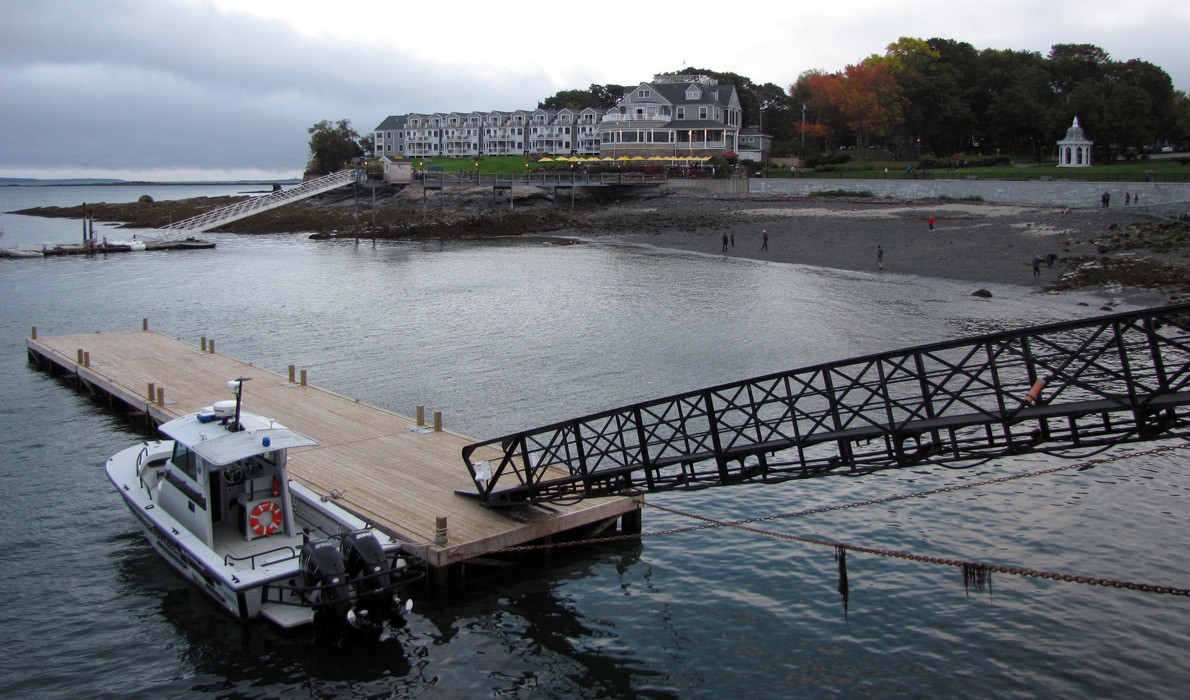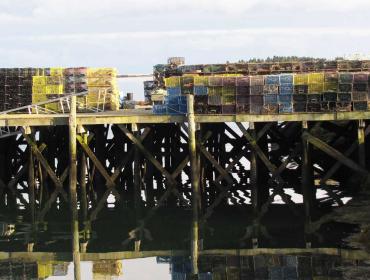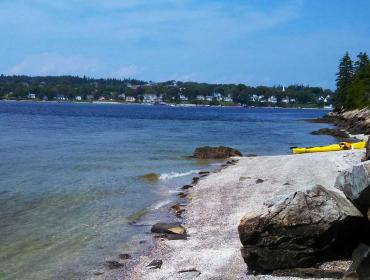Posted November 17, 2017
Last modified December 13, 2017
Social media and new technology are driving change in the tourism industry at an unprecedented rate.
Those changes are driving marketplace innovations, as tourism interests strive to reach new demographic groups on the latter’s own terms.
That was the message from Paul Ouimet, managing director of DestinationNEXT, a research and analysis initiative of Destination International in Washington, D.C. Since launching DestinationNEXT two years ago, Ouimet has conducted workshops with scores of destination marketing professionals in ten countries, and he was in Ellsworth mid-October to speak with tourism professionals in the Downeast and Acadia region, as part of an assessment of Maine’s eight tourism regions: Aroostook County, Downeast Acadia, Greater Portland and Casco Bay, Kennebec Valley, Maine Lakes and Mountains, Midcoast, the Maine Beaches, and the Maine Highlands.
Early study of top trends narrowed to focus on smart technology and social media, he said. Not long ago, search engine optimization was the hot topic among tourism professionals.
“We were all trying to build the best website, to increase our chances of a high ranking,” he said. “The industry has changed dramatically since then.”
Changes include substantial use of online queries, videos, and photos. Every minute, Google queries number 3.5 million, 4.1 million videos are downloaded, and 46,000 images are posted on Instagram. Half of users rely on images as a source of ideas about where they should visit.
“The bottom line is, this has exploded in the last three years,” Ouimet said. “But it’s still in the growth phase.”
The biggest development for tourism, as a result of the convergence of social media and smart technology, is the prevalence of peer-to-peer review sites like Yelp and Trip Advisor, he said. A drop in rankings can cost millions of dollars.
Several critical themes emerged from DestinationNEXT’s studies, he said.
“Most important is, What are visitors looking for today? We’ve got lots of information. We have more money to do things. We’re looking for unique, authentic things. That’s different from 5-10 years ago, when we were prepared to take some bad with the good. Today, people plan their trips well in advance on short purchasing cycles.”
Ouimet noted that poor broadband coverage in parts of Maine is an impediment for those travelers.
Travelers today also seek experiences, more than attractions.
“They want to have an emotional connection,” he said.
Third, due to tourism’s growth in the last six years, some destinations are now “bursting at the seams” and seeing opposition to increased visitation from residents.
Emerging marketing strategies include shifting from broadcast to engagement.
“It’s not as much about glitzy ad campaigns in magazines and newspapers. This is more about digital platforms where your visitors are telling the stories for you,” he said.
Secondly, entire communities, rather than a few tourism interests, should collaborate to create experiences relevant to today’s visitors. Ouimet cited Atlas Obscura, listing unusual experiences and places, as an example of marketplace shift. Destination marketing organizations can similarly curate their content, he said. Video has proved useful for generating fresh content; many organizations are buying drones.
Tourism data, municipal policies coordinated with tourism, investment in customer service, leveraging destination features, and syncing conventions with tourism attractions are also important, he said.
Communities differentiating themselves as “unique value propositions”—like Austin’s music scene—are finding success. Successful tourism correlates with economic development performance, he said.
“If you’re going to have a shot at getting someone to relocate a business in your community or invest in a start-up, you have a better chance if they’ve been to your city before as a visitor,” he said.
More attractions and events also increase visitation, he said, citing WaterFire in Providence, R.I., as an example.
“It’s redefined Providence as a city and a destination,” Ouimet said. Sixteen lightings in 2017 brought almost 1 million visitors; the city is now leveraging WaterFire as a convention attraction. Gardens Aglow at Coastal Maine Botanical Gardens, in Boothbay, is a similar concept.
Ouimet said the biggest issue is funding. However, some cities are seeing hotels band together to generate additional funds for promotions. Some have created tourism improvement districts to generate development incentives.
Five-year plan
The Maine Office of Tourism’s Donna Moreland said the state aims to make Maine a four-season destination. Its 2014-2019 plan zeroed in on first-time visitors, with three priority markets:
• “balanced achievers,” enjoy experiences both urban and off the beaten path;
• “genuine originals,” love outdoor activities, don’t like guidance;
• “social sophisticates,” love luxury, free-spenders.
“The campaign is working,” she said. First-time visitation increased from 3.13 million in 2013 to 5.17 million in 2016. Tourism expenditures increased from $5.23 billion in 2013 to $5.99 billion in 2016, and supporting 105,957 jobs or 16 percent of employment.
Contributed by



